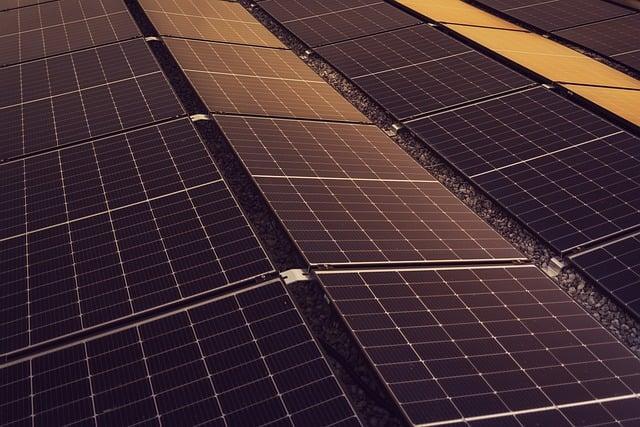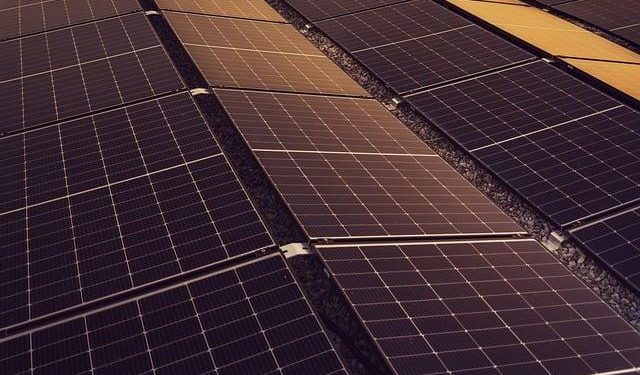In the vast expanse above our heads, a new frontier of energy beckons, promising a future where the sun’s power is harnessed not from rooftops or sprawling desert arrays, but from the silent vacuum of space. As humanity’s insatiable thirst for clean, renewable energy grows, a compelling question emerges: should we direct our resources towards ambitious space-based solar projects, or continue refining and expanding our terrestrial solar solutions? This conundrum is not merely a matter of technological feasibility, but a crossroads of innovation, investment, and environmental stewardship. In this exploration, we delve into the potential and pitfalls of both realms, weighing the promise of limitless energy from the stars against the grounded, yet evolving, solar systems on Earth. Join us as we navigate this solar dichotomy, seeking insights that could illuminate the path to our sustainable energy future.
Exploring the Potential of Space-Based Solar Energy
The vastness of space offers a compelling frontier for harnessing solar energy, presenting a paradigm shift from conventional terrestrial methods. Space-based solar energy systems have the potential to capture sunlight without atmospheric interference, providing a constant and more efficient energy source. This uninterrupted access to sunlight could significantly increase the energy yield compared to ground-based solar farms, which are subject to weather conditions and day-night cycles.
- Higher Efficiency: Solar panels in space can operate at optimal conditions, maximizing energy capture without the limitations faced on Earth.
- Continuous Energy Supply: With the absence of night and weather-related interruptions, space-based systems can deliver a steady power supply.
- Innovative Technologies: Developing these systems could drive advancements in aerospace and energy technologies, leading to broader scientific and economic benefits.
However, the implementation of such ambitious projects requires substantial investment, rigorous testing, and international cooperation. As the debate unfolds, it’s crucial to weigh these futuristic possibilities against the practical, immediate benefits offered by expanding terrestrial solar infrastructure. Ultimately, the decision to prioritize funding will depend on balancing these innovative potentials with the pressing energy demands and sustainability goals of today.

Comparative Analysis of Space and Earth Solar Technologies
As the quest for renewable energy intensifies, both space-based and terrestrial solar technologies present compelling opportunities. Space-based solar projects leverage the advantage of unobstructed sunlight, free from atmospheric interference and the day-night cycle, allowing for potentially uninterrupted power generation. These projects could harness solar energy 24/7, providing a constant energy supply. However, the technical and financial challenges of launching and maintaining solar satellites are significant.
In contrast, terrestrial solar technologies benefit from established infrastructure and lower initial costs. Ground-based solar farms can be rapidly deployed and scaled with existing technology, making them a more immediate solution for reducing carbon footprints. They also present fewer logistical challenges and risks compared to their space-based counterparts. Key considerations include:
- Efficiency: Space-based systems have the potential for higher energy capture but face technological hurdles.
- Cost: Initial investment and maintenance for space projects are higher, whereas terrestrial solutions are more budget-friendly.
- Scalability: Terrestrial systems can be expanded easily, while space-based systems require advanced planning and resources.

Economic Viability and Environmental Impact of Solar Initiatives
The economic viability of space-based solar projects versus terrestrial ones involves a nuanced analysis of costs, benefits, and potential environmental impacts. On one hand, terrestrial solar initiatives benefit from lower initial costs, easier maintenance, and a more established infrastructure. They are immediately deployable, with tangible returns on investment that align with the current global push for sustainable energy solutions. These projects also provide a local economic boost through job creation in installation and maintenance.
However, space-based solar projects present a fascinating frontier with the potential to deliver uninterrupted energy due to their ability to avoid atmospheric and nighttime interruptions. The environmental impact of such initiatives could be significantly lower in the long run, as they can harness solar power without consuming land or impacting terrestrial ecosystems. Challenges such as high launch costs, technological hurdles, and long-term sustainability of materials are notable, yet advancements in technology could mitigate these issues. Key considerations include:
- Cost Efficiency: Initial investment versus long-term savings.
- Technological Feasibility: Current advancements in space technology.
- Environmental Footprint: Impact on land use and biodiversity.
- Energy Reliability: Continuous energy supply potential.

Strategic Recommendations for Future Solar Energy Investments
When considering the future of solar energy investments, both space-based and terrestrial projects present compelling opportunities. However, strategic recommendations for investors should focus on a balanced approach. Space-based solar projects offer the potential for continuous energy collection, unimpeded by Earth’s day-night cycle or atmospheric conditions. This could significantly boost global energy supplies, especially for regions with limited access to renewable resources. Nevertheless, these projects are still in the experimental phase and entail high initial costs and technological risks.
On the other hand, terrestrial solar investments have already demonstrated substantial returns and scalability. They provide a more immediate solution to the growing demand for renewable energy. Key recommendations for these projects include:
- Investing in advanced photovoltaic technologies to improve efficiency.
- Exploring hybrid systems that integrate solar with other renewable sources.
- Focusing on regions with high solar irradiance for optimal output.
Balancing these two avenues can pave the way for a diversified energy portfolio, ensuring both short-term gains and long-term innovation in the solar sector.
Final Thoughts
As we stand on the precipice of a new era in energy innovation, the debate between space-based and terrestrial solar projects invites us to look both skyward and across our landscapes. Each approach offers unique possibilities and challenges, painting a complex tapestry of potential solutions to our ever-growing energy demands. As we continue to explore these paths, it becomes clear that the answer may not lie in choosing one over the other but in embracing a holistic vision that harnesses the strengths of both. The future of solar energy is a canvas yet to be completed, inviting pioneers, policymakers, and dreamers alike to contribute their brushstrokes. the most sustainable path forward may be one that transcends earthly boundaries while staying grounded in practical, impactful solutions. As the sun continues its timeless journey across the sky, so too does our quest for a brighter, more sustainable future—a future that beckons us to imagine, innovate, and illuminate.

































